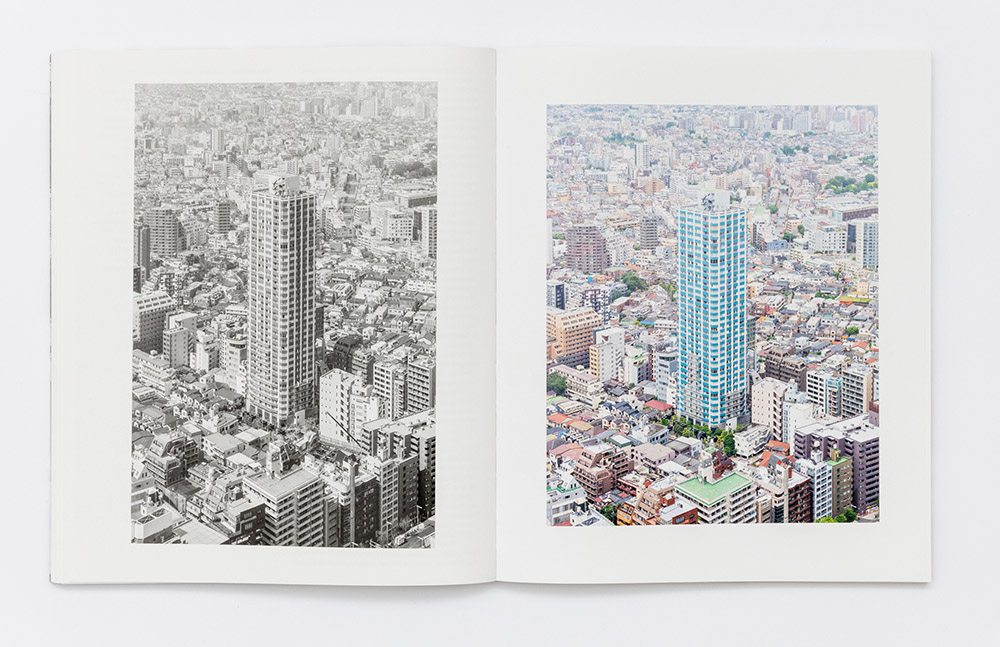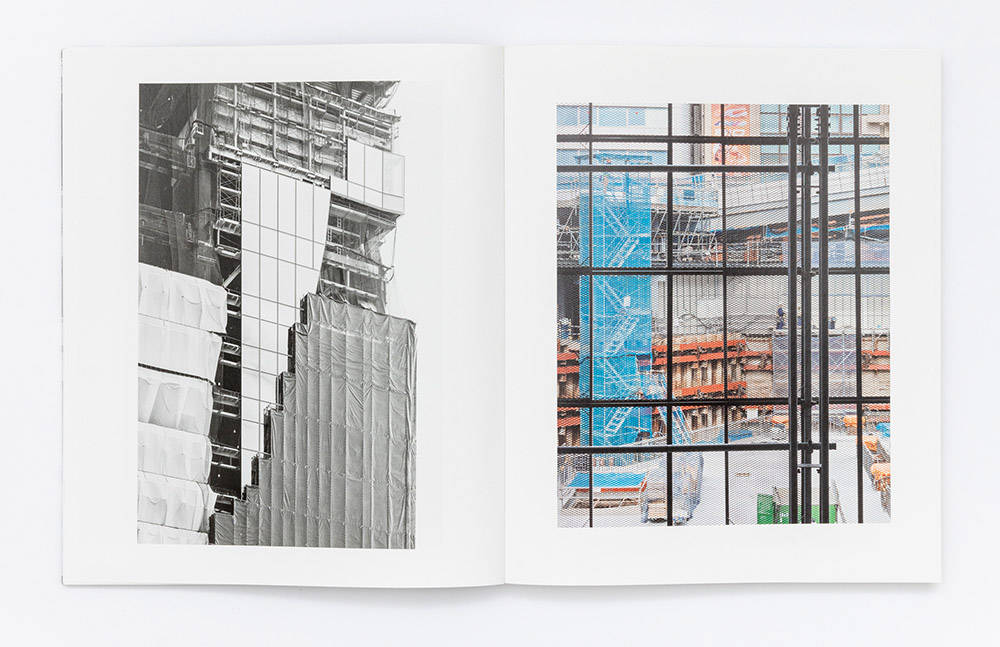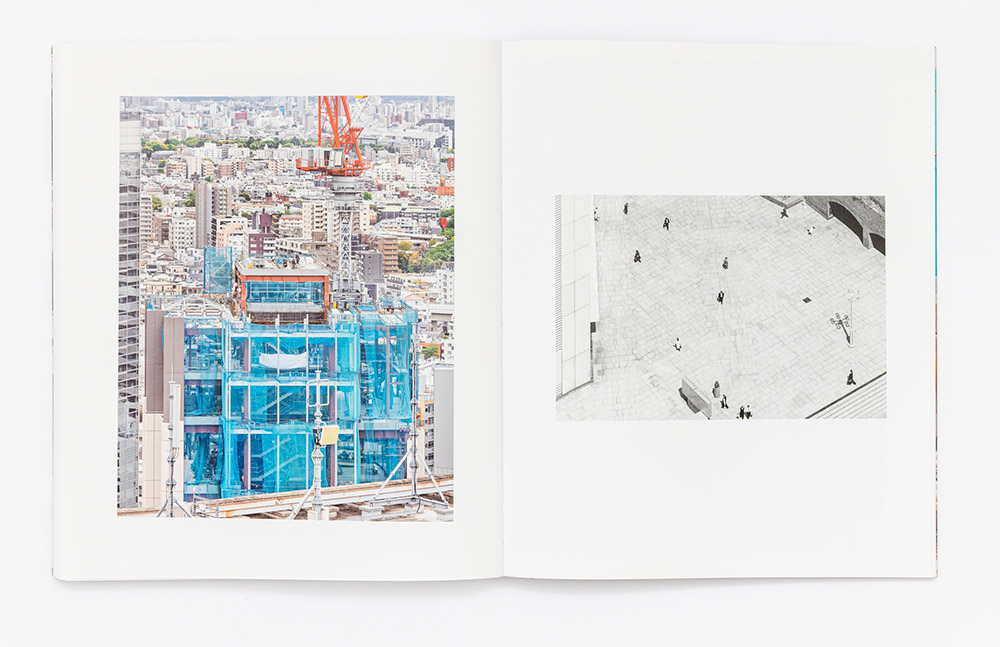
Tokyo Fugue
Jesús Vassallo
Originally published in Vantage Point, 2022
On April 25, 2016, Mårten Lange and Daniel Everett met on the occasion of an opening at Kunsthal Charlottenborg in Copenhagen. Their first conversation was about a striking coincidence—Lange had discovered, to his amazement, that Everett’s latest book contained a photograph that was practically identical to one of his very own. The image in question is a distant view of the building known as City Tower, in Tokyo, taken from the rooftop of the nearby Metropolitan Building. In the image, the slender tower stands up, squarely occupying the center of the frame as a sitter would in a portrait, with the unruly mass of smaller buildings that make up the city fabric filling the rest of the frame without reprieve. Everett’s version is in color, with a misty atmosphere and accents in bright pastel colors, while Lange’s is a sharper focused black and white image, with a rich mid tonal range.
As the two artists engaged in a conversation around the surprising coincidence, they realized they both had been photographing the city of Tokyo recursively, oftentimes looking at the same places at different times. What could have caused such insistence around the same motifs? Was it because of the way in which photographic technology and specific equipment mediates the way artists relate to their environment? Could it be the way both of them responded to their forbears in the history of photography as they tried to situate themselves within it? Or was it perhaps the shared experience of wandering a foreign land, the invisibility and detachment provided by their alien status? Intrigued as they were by these questions, their instinct was not to try and answer them straightaway, but rather to use them as the impetus behind a new project.
During the next six years, as both photographers continued their intermittent travels to Japan, they started putting together a book, laboring over multiple drafts as they refined image selection and layout. The result is a visual analogue of their crossing paths in the Asian metropolis—a multifaceted series of echoes, coincidences, and deflections that captures the reader in its changing rhythm. Indeed the pace achieved by Lange and Everett is uncommon for a photobook, the threading of images building up a wordless suspense worthy of a page-turner. The series of images is at times vertiginous—we can barely keep up with the photographers in their urban exploration—but it can also slow down to scrutinize a banal series of details —for instance producing a taxonomy of marks on the tarmac—creating spaces where time barely goes by.

The overall effect is that of a fugue, a baroque musical composition in which a melody is introduced and then successively taken up by several voices or parts in counterpoint, gradually interweaving as it flows into a series of crescendos. Unlike in a fugue, however, the voices of Everett and Lange are not exactly harmonious. Their uncanny similarity produces an effect more akin to a minor dissonance, one where a slight divergence of perspective and tone throws us off-kilter and forces us to constantly question what it is exactly that we are witnessing.
It would seem to follow from that observation that the primary aim of the book is to problematize the idea of originality, to bring it to a crisis through the juxtaposition of two authorial voices that are as similar as to sometimes practically be confounded—if not literally, at least to a degree that would make any other artist feel uncomfortable.
While the idea of originality, or its negation, seems to dominate the book’s first reading, further examination of its contents reveals a strong topical interest on the side of the photographers. Given their immersion in the environment of Tokyo, it is almost inevitable that the practical totality of what they photograph is human-made. However, they systematically insist on framing those urban artifacts that most explicitly expose the traces of their making. This interest is most apparent perhaps in the photographs of electricity and telephone poles, where the working protocols of Japanese utility companies translate into intricate arrangements that are casual yet not completely unintentional. Similarly, many of their images of buildings are actually taken during the process of construction. In those job site photographs, the organization of building aids and safety barriers belies the apparent chaos and reminds us of the fastidious process by which the built environment comes to be saturated of human intention.

Vantage Point could then be understood as an ode to the process by which the city, a giant collective artifact, is built through the accretion of layer after layer of discrete decisions, some big and some small, accumulated over long periods of time. The pathos of the images resides then precisely in exposing the fragments of individual agency within the brutality of this large-scale transformation, but also in revealing how messiness and imperfection are inseparable from our human ambition to establish any sort of order.
While the tension between order and chaos permeates the work of both photographers with similar intensity, it is also in their attitude towards this tension that their sensibilities become more identifiably different. In Lange’s images for instance, optical correction, framing, and the masterly use of the greyscale all contribute to images in which the coexistence of organization and disorder is naturalized in a literal way, in the sense that they are both captured as part of a still nature. In Everett’s images, on the other hand, the selective highlighting of detail refuses to be resolved in the whole, systematically bringing the question of artificiality back to the foreground.
The protagonist of the book is then of course Tokyo, but more generally the idea of the city. While both Everett and Lange are foreigners, and they surely take different photographs than a Japanese photographer would, their objective is not to exoticize the place, nor to render it different or unique. In their case, I believe, the distant metropolis, with its mix of old and new, acts like a mirror to their own respective environments: a massive and convoluted body onto which to imprint their own anxieties and fascinations with the idea of civilization itself.